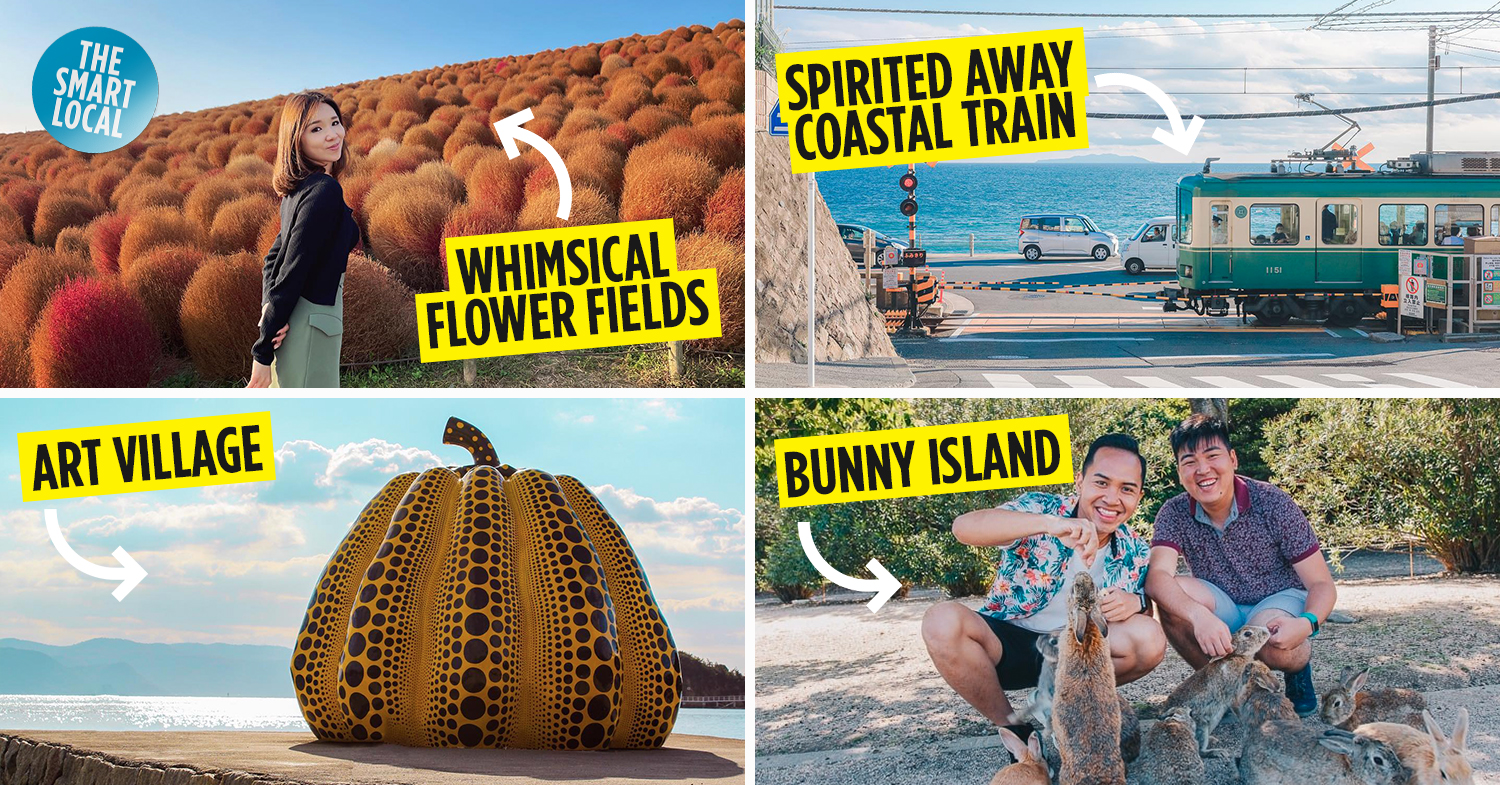Day trips from Tokyo & Osaka
Shibuya Scramble in Tokyo? It’s been crossed off the bucket list. Posing in front of the Glico Running Man in Dotonbori? Got ’em pics for the ’Gram already. If you’re a regular traveller to Japan, we don’t doubt you’ve been there, done that all over Tokyo and Osaka.
The next time you’re in Japan, toss your usual itinerary of shopping in Ginza and touring the Osaka Castle aside. Instead, we’ve got a lineup of less touristy things to do that you can visit in less than 3 hours from these major cities via public transport. Here’s where to go and how to do it:
Table of Contents
- Day trips from Tokyo & Osaka
- Travel around Japan with the Whole Japan JR Rail Pass
- – From Tokyo –
- 1. Stand in fields of seasonal flowers all year round
- 2. Ride a coastal train like in Spirited Away
- 3. Watch a traditional onsen dance
- 4. Visit small Japanese village with views of Mt Fuji
- 5. Pick & eat strawberries fresh from the field
- – From Osaka –
- 1. Pet bunnies on an abandoned island
- 2. Visit a village turned into an art installation on Japan’s art island
- 3. Watch out for monsters in Kyoto
- 4. Visit the most sacred site in Japan
- 5. Come face-to-face with with Godzilla
Travel around Japan with the Whole Japan JR Rail Pass
With an extensive network of trains and buses available, it’s easy to get around Japan without the need for a driver’s license. For fuss-free travel, we recommend the JR Whole Japan Rail Pass (S$292.20/adult, S$146.10/child) that covers JR trains, buses, and even ferries around the entire country.
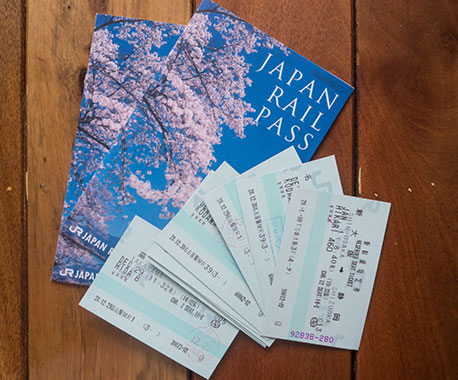
Image credit: Japan Rail Pass
You can book the pass for durations of 7, 14, or 21 days at a time, saving you the hassle of buying new passes if you plan to be in Japan for a longer stay.
Book the Whole Japan JR Rail Pass.
There are rail passes that cover just Kansai and Tokyo as well, if you don’t plan on travelling to both areas. Similar to the JR Whole Japan Rail Pass, these can be used on JR trains and buses, but are limited to the areas you choose.
Buy the JR Kansai Wide Area Pass and JR Tokyo Wide Pass.
– From Tokyo –
1. Stand in fields of seasonal flowers all year round
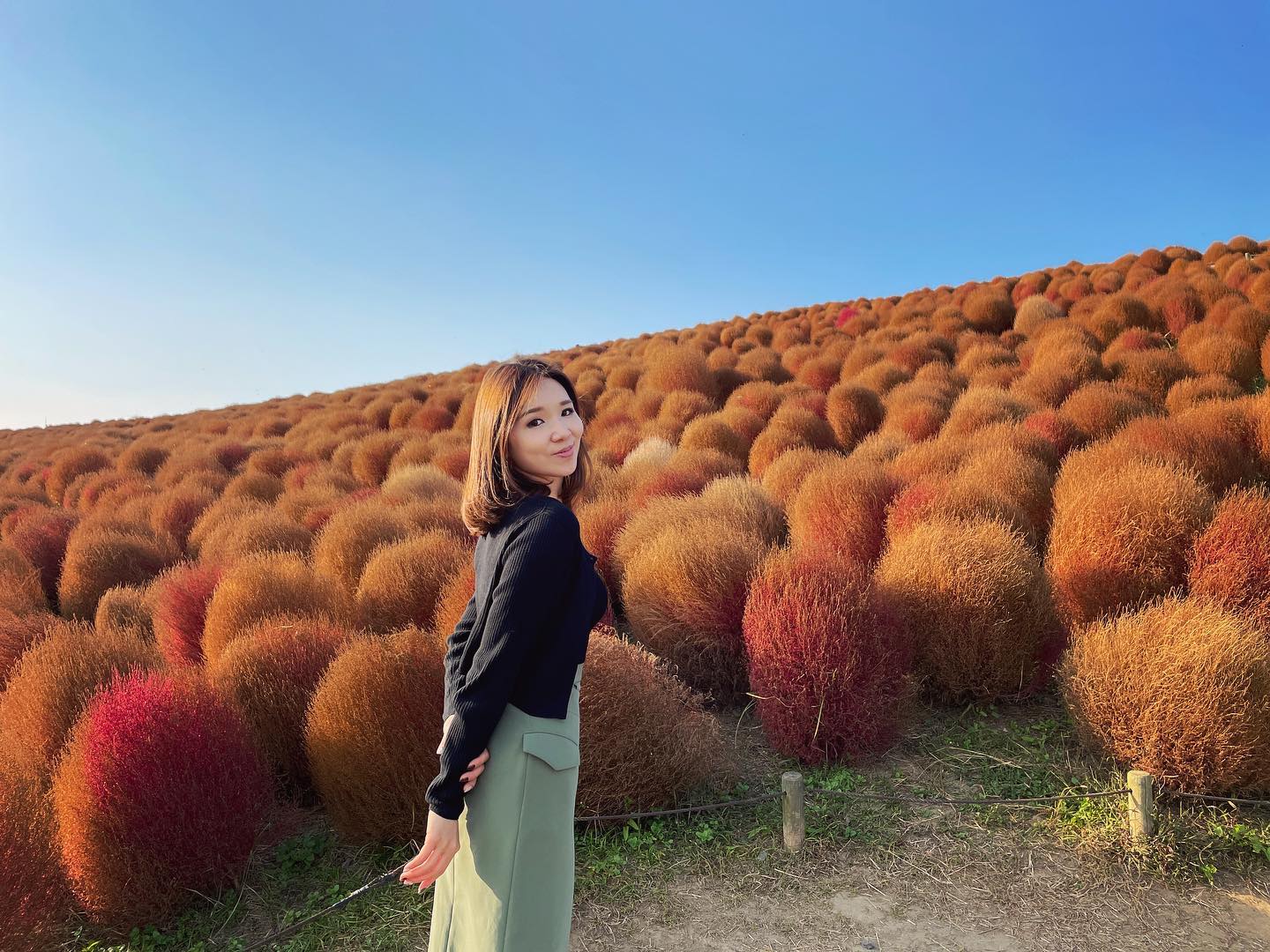
Image credit: @stef_stef1013
Yes, those pics you’ve seen on IG are real. Vast fields of blue nemophila in spring and red kochia in autumn are what Hitachi Seaside Park is best known for. When these flowers aren’t in bloom, the rest of the year sees vivid poppies, roses, and tulips springing up in other parts of the park.
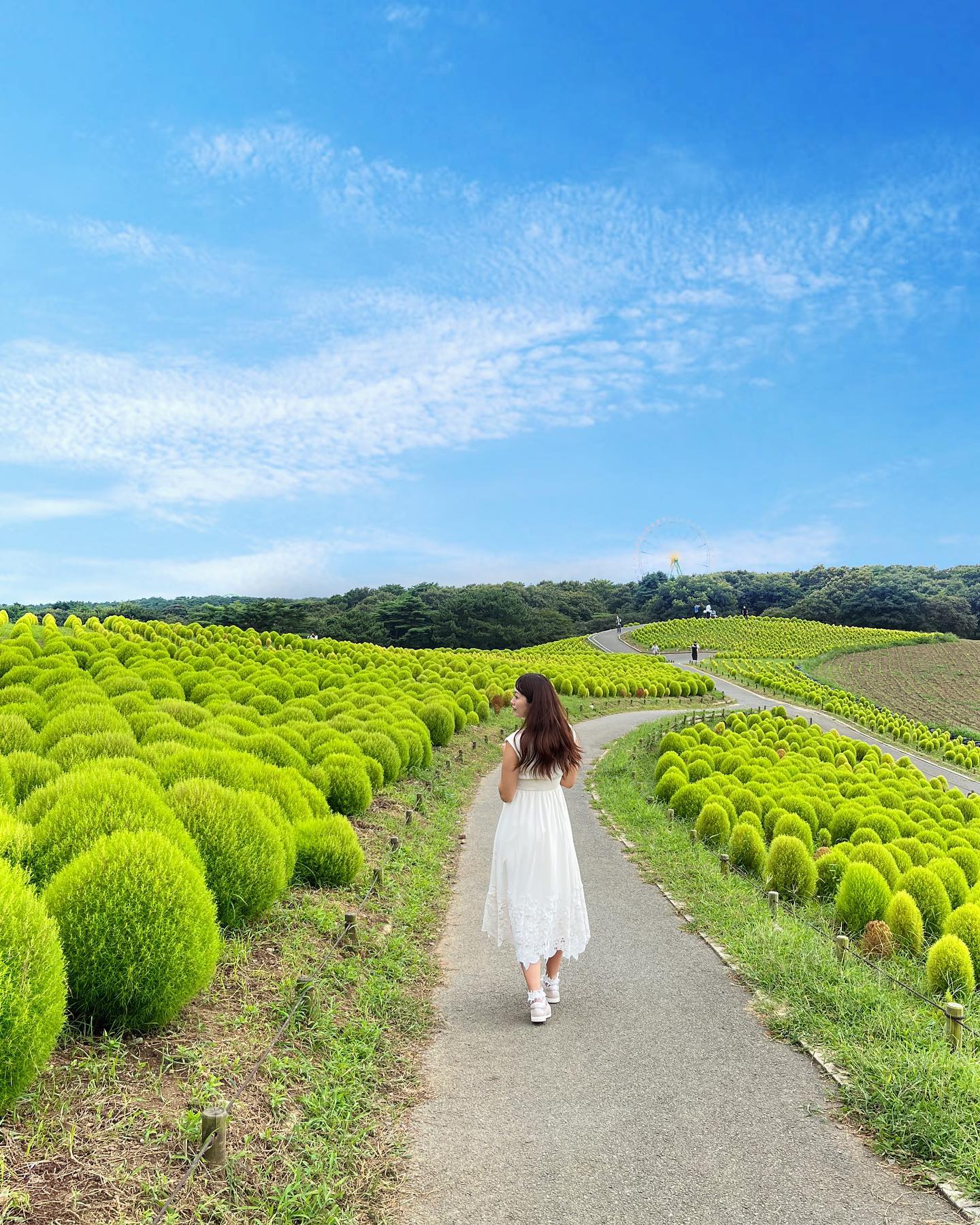
Image credit: @kurumiii4_
While you’re bound to catch a few blooms anytime you visit, your best bet is to check the Hitachi Seaside Park website to ensure you get your Kodak moment. But on the off chance there aren’t any flowers when you’re there, there’s still plenty to do at the park.
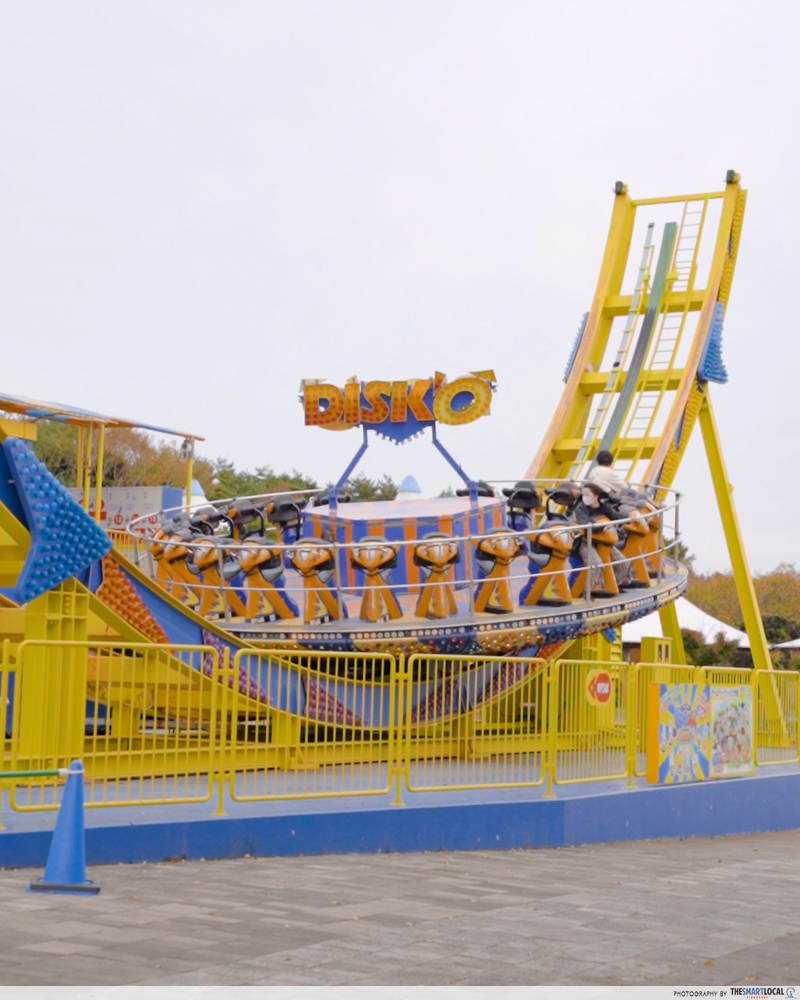
In the heart is an amusement park filled with more than 30 carnival rides such as a Ferris wheel and roller coaster. Prices range from ¥200-¥600 (~S$1.98-S$5.94) per attraction, which you can pay for individually. We recommend the day pass (¥3,800, ~S$37.63), which gives you unlimited access to all the rides and games available.
Travel time from Tokyo: 2.5 hours
Getting there: Take the limited express JR East Tokiwa train from Ueno station to Katsuta station. Then take the Ibaraki Kotsu bus to Hitachi Seaside Park.
You can also opt to book a 1-day tour (S$118.99) that covers Hitachi Seaside Park and Ashikaga Flower Park or Kairakuen Park. It includes a yakiniku or shabu shabu buffet lunch and roundtrip transport from Shinjuku station.
Book the 1-day Hitachi Seaside Park tour.
Hitachi Seaside Park
Price:
Child (0-15 years old): Free
Adult (16-64 years old): From ¥450, ~S$4.45
Senior (65 years old and up): From ¥210, ~S$2.07
Address: 605-4 Onuma-aza, Hitachi Seaside Park, Mawatari, Hitachinaka, Ibaraki 312-0012, Japan
Opening hours: Wed-Mon 9.30am-4.30pm (Closed on Tuesdays)
*Hours may vary – refer to Hitachi Seaside Park website for more details
Contact: +81 029 265 9001 | Hitachi Seaside Park website
2. Ride a coastal train like in Spirited Away
If you’re in need of a sun, sand, and sea respite away from the bustling city, look no further than Kamakura. It’s a beach town popular with surfers, but you’ll often see Tokyo-ians taking a weekend breather here too.
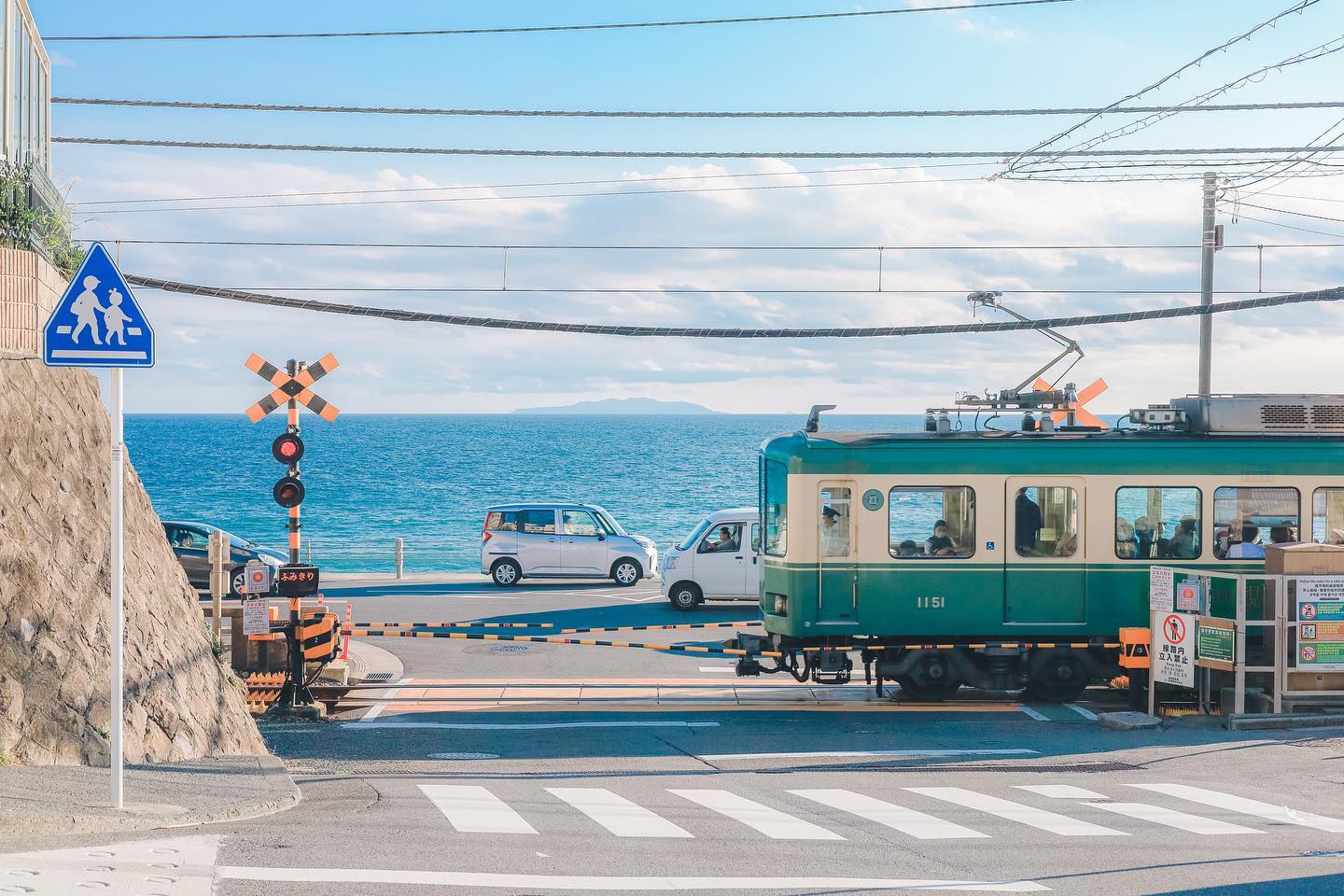
Image credit: @r_un_5296
Your intro to the beaches here begin with riding the train on the Enoden Line that runs parallel to the coast. It’s a scenic journey reminiscent of the train scene in Spirited Away, as this train brings you right by the edge of the water. You’ll even be able to look out onto the expansive Sagami Bay from the comfort of your train seat.
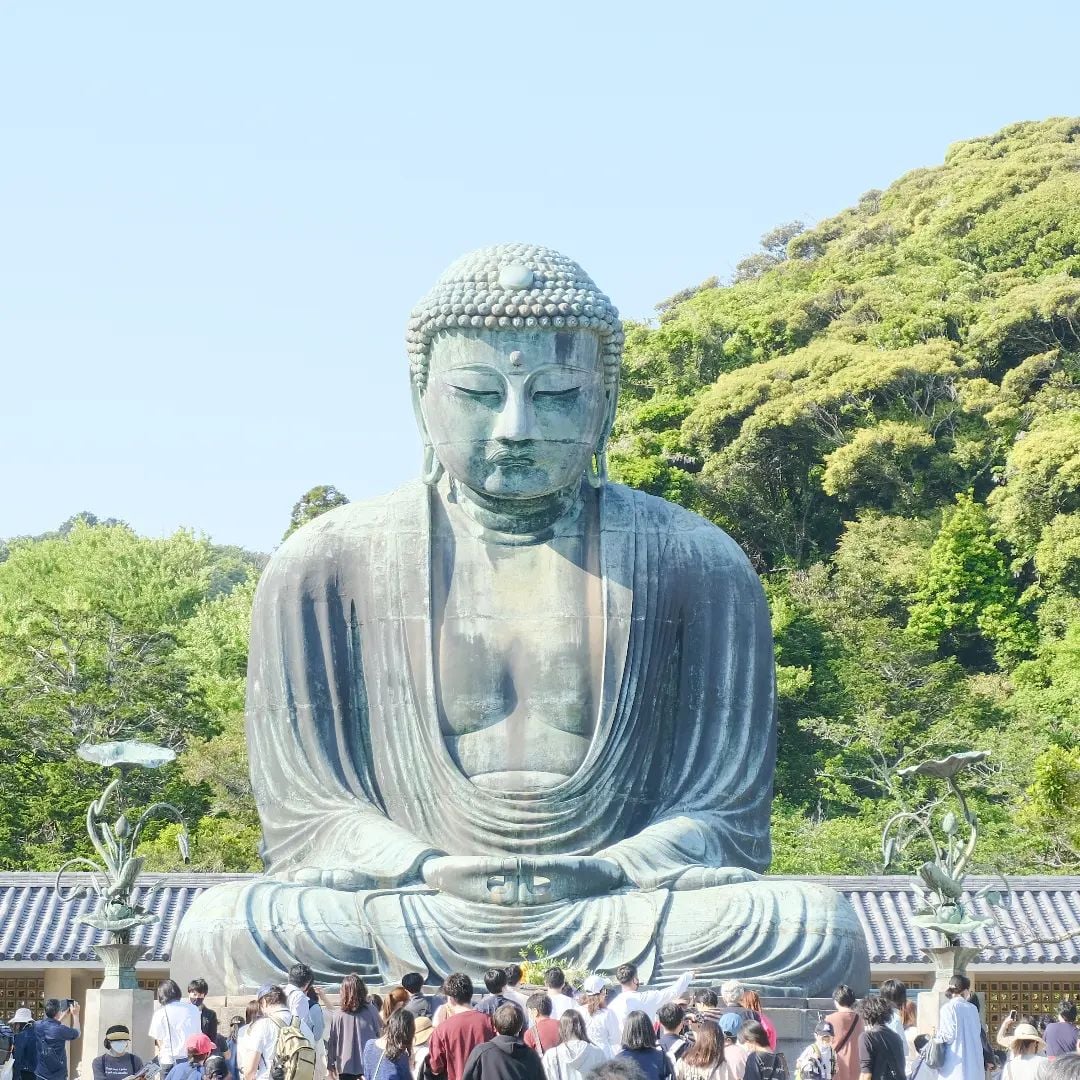
Image credit: @xiong.72
The chill vibes aren’t just limited to the beach. This place is peak zen thanks to the numerous temples and shrines here. The most recognisable and an icon of Kamakura is the 11.3m-tall Great Buddha that resides at Kotokuin Temple.
Travel time from Tokyo: 1 hour
Getting there: Ride the JR Yokosuka train from Tokyo directly to Kamakura Station. Alternatively, you can cover Kamakura, nearby Enoshima Island, and Odawara Castle with a day trip from Tokyo (S$148.79). You’ll get transport to and from Shinjuku, lunch, and all temple admission tickets.
Book day trip to Kamakura, Enoshima Island, and Odawara Castle.
Enoden Line
Price:
Adult: From ¥200, ~S$1.98
Child: From ¥100, ~S$0.99
Address: 1-15 Onarimachi, Kamakura Station, Kamakura, Kanagawa 248-0012, Japan
Contact: +81 046 624 2711 | Enoden Line website
Kotokuin Temple
Price:
Adult (13 years old and up): ¥300, ~S$2.97
Child (6-12 years old): ¥150, ~S$1.48
Address: 4-2-28 Hase, Kotokuin Temple, Kamakura, Kanagawa 248-001, Japan
Opening hours: 8am-5pm, Daily
Contact: +81 046 722 0703 | Kotokuin Temple website
3. Watch a traditional onsen dance
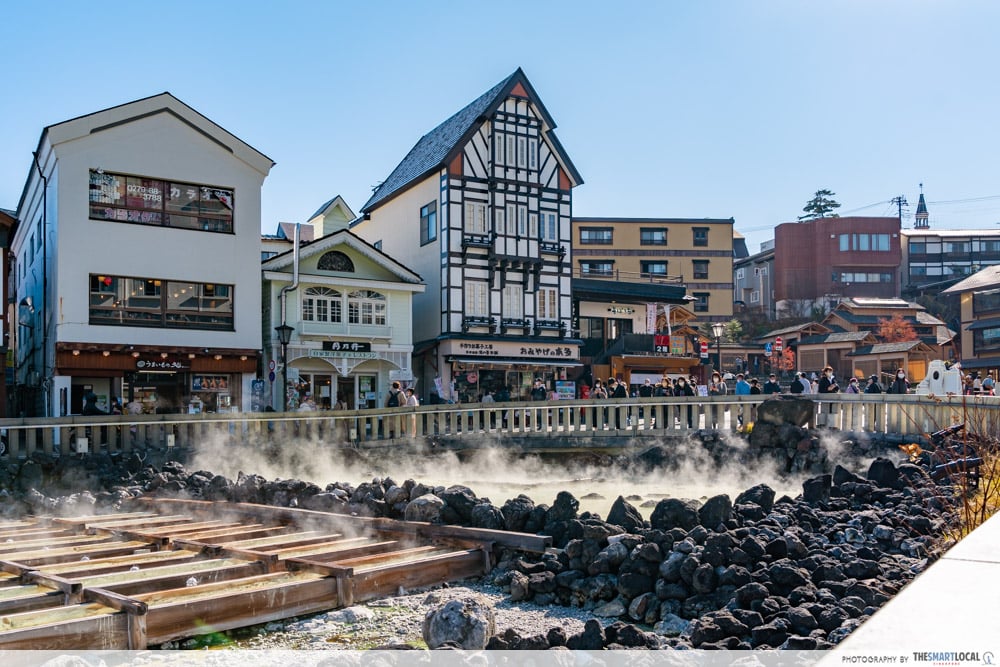
The Yubatake at the village’s centre where the hot spring water is collected first before sent to various bathhouses.
Onsen villages are a dime a dozen in Japan and there are heaps you can visit within a day from Tokyo. But we’re willing to bet you’ve never experienced the traditional onsen dance that takes place only at the small town of Kusatsu Onsen.
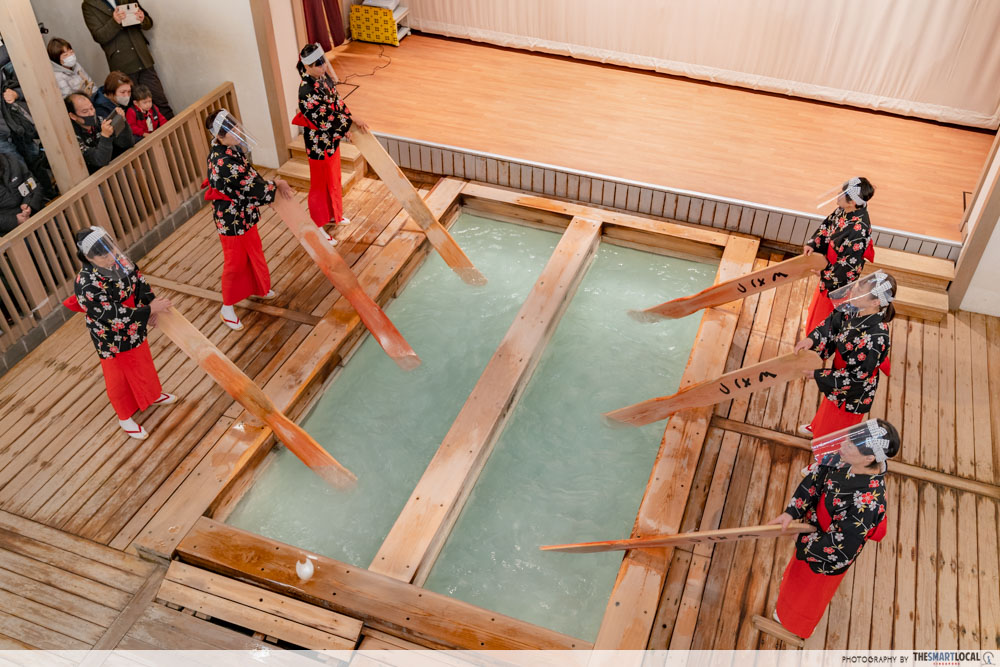
Known as the yumomi, the dance involves women singing and using paddles to beat the hot spring water that’s channelled straight into the Netsuno-yu bathhouse. It’s a centuries-old tradition that helps cool down the scalding hot water into something more manageable to soak in.
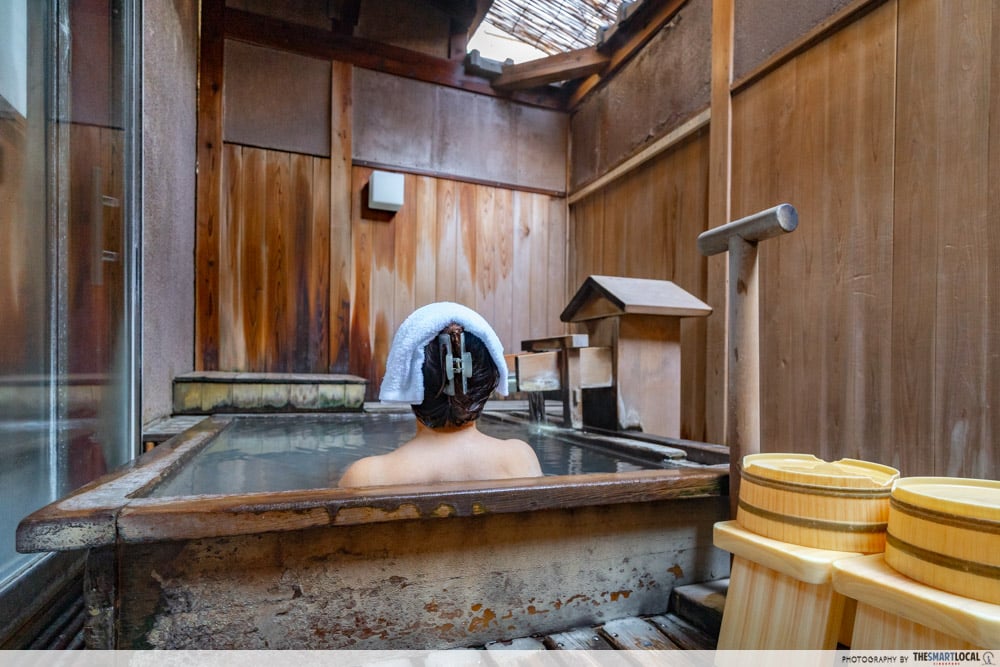
The private onsen at Kusatsu Naraya.
Access to the cooled mineral-rich water is available at the free public foot baths at Sainokawara Park. But if you want a full-body soak, there are onsens at Kusatsu Naraya with hourly access. These are completely private, including the changing room and shower – ideal for non-exhibitionists or those with tattoos who can’t get into other bathhouses.
Travel time from Tokyo: 3 hours
Getting there: Take the JR Hokuriku Shinkansen from Tokyo Station to Karuizawa Station. Transfer to the Kusakarukotsu Bus to the last stop at Kusatsu Onsen. For less of a rush getting back to Tokyo, you can book an overnight stay at Kusatsu Onsen Futabaya, an inn just a couple of minutes from the centre of the village.
Book a room at Kusatsu Onsen Futabaya.
Netsuno-yu
Price: ¥700/pax
Address: 414 Kusatsu, Netsuno-yu Kusatsu, Agatsuma, Gunma 377-1711, Japan
Opening hours: Mon-Fri 10.30am-3.30pm (Closed on Saturdays and Sundays)
Contact: +81 279 88 3613 | Netsuno-yu website
Kusatsu Naraya
Price:
1-hour private onsen with room: From ¥2,550/pax
Address: 3-9-6 Kusatsu, Kusatsu Naraya, Agatsuma, Gunma 377-1711, Japan
Contact: +81 279 88 2311 | Kusatsu Naraya website
4. Visit small Japanese village with views of Mt Fuji
With the right conditions, you can see Mt Fuji towering over the skyline of Tokyo. But that requires sheer luck for clear blue skies and a spot in a tall building to get that million-dollar shot. Here’s the cheaper alternative: Hopping on a train to Oshino Hakkai and its neighbour Oishi Park.
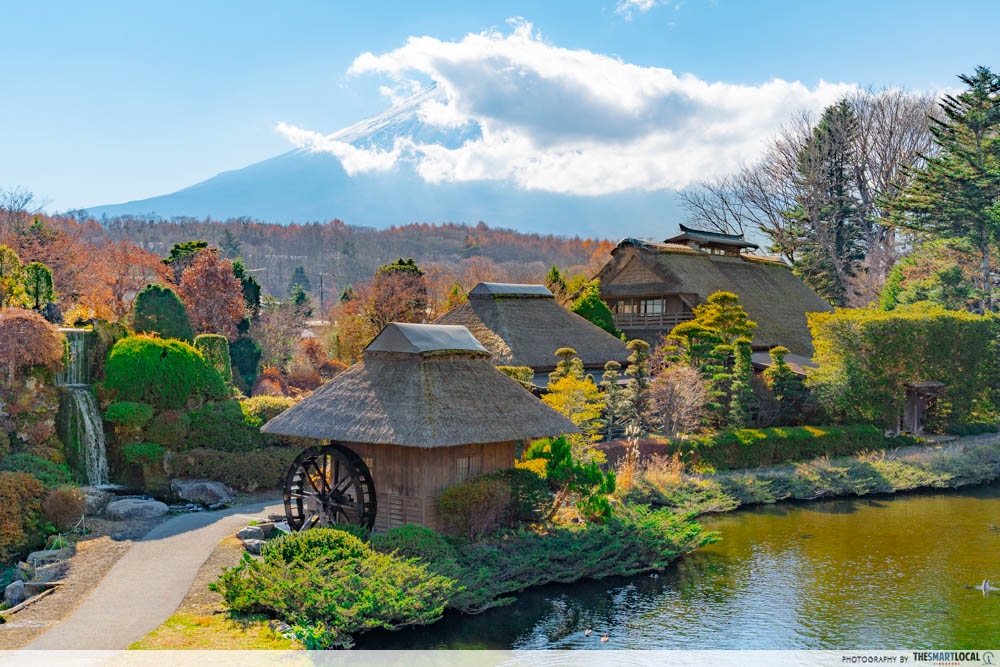
Mt Fuji peeking through clouds from the observation deck at Hannoki Bayashi Museum.
Oshino Hakkai is a tourist attraction right at the foot of Mt Fuji. Guidebooks will point to Kagami Lake as the spot to catch a glimpse of Mt Fuji. But for less of a crowd and uninterrupted views, get a ticket to the Hannoki Bayashi Museum. The museum has an open-air rooftop facing the village’s largest lake with Mt Fuji in the background.
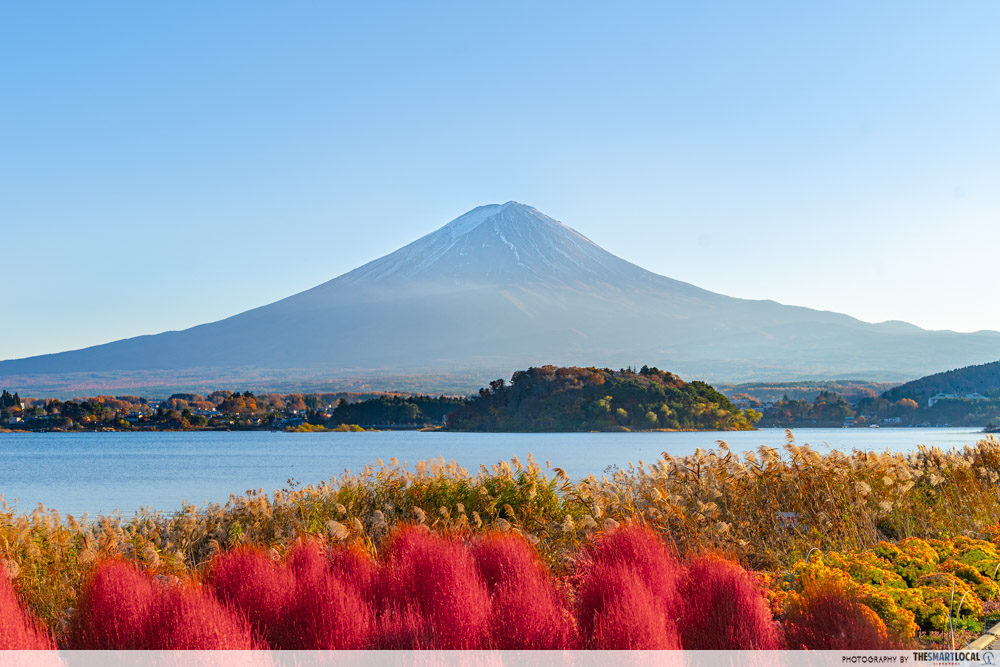
A clearer view of Mt Fuji from Oishi Park where you can catch the bright red kochia in autumn.
From Oshino Hakkai, Oishi Park is just an hour away and also offers a picturesque view of Mt Fuji surrounded by various flowers all year round. Catch tulips and daffodils in spring, pink moss phlox and lavender in summer, and kochia in autumn to early winter.
Travel time from Tokyo: 2.5 hours
Getting there: Take the Rapid train on the JR Chuo Line from Tokyo Station to Shinjuku Station. Transfer to the Fuji Excursion line to Fujisan Station. Get onto the Fujiyuko bus towards Gotemba and stop at Oshino Hakkai.
Day trips to Oshino Hakkai often include stops at Lake Kawaguchi and the Gotemba Premium Outlets for shopping. From S$68.35, you’ll get a fully guided tour with options for a steak or Japanese lunch set.
Book the Mt Fuji Day Tour from Tokyo.
From Oshino Hakkai, you can take the Fujiyuko back to Kawaguchiko and transfer to the shuttle for Kawaguchiko Natural Living Center to head to Oishi Park.
Hannoki Bayashi Museum
Price: ¥300/pax, ~S$2.97/pax
Address: 2-6-5 Shibokusa, Hannoki Bayashi Shiryokan, Oshino, Minamitsuru District, Yamanashi 401-0511, Japan
Opening hours: Mon-Wed, Fri 9.30am-4pm | Sat-Sun 9am-4.30pm (Closed on Thursdays)
Contact: +81 555 84 2587
5. Pick & eat strawberries fresh from the field
Where Tokyo is all crowds and skyscrapers, just an hour plus away is the mountainous prefecture of Gunma. For a quick escape from urban noise, pencil in a Day Trip to Gunma (S$134.79) for endless food and a field of glowing lights for that much needed travel pic for IG.
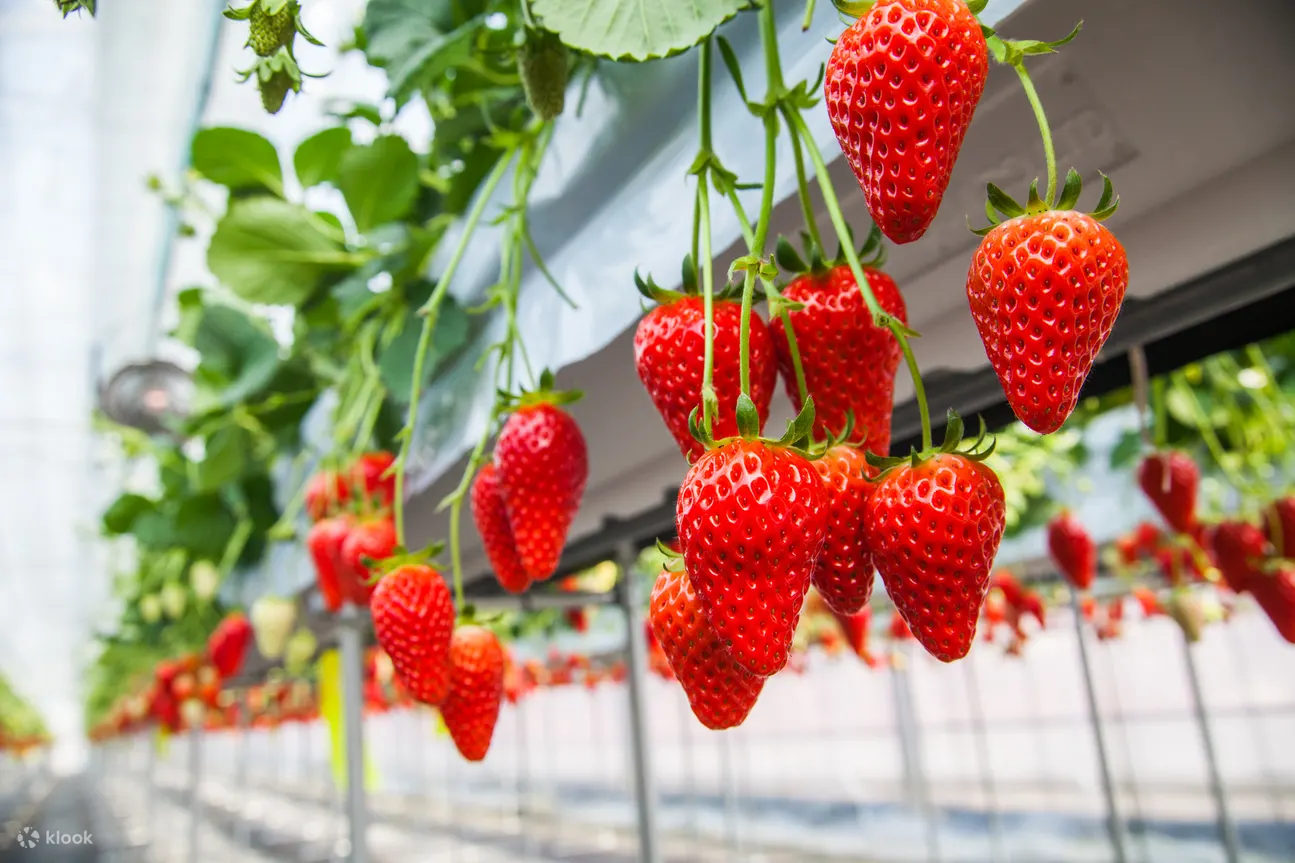
Image credit: Klook
Start your day with picking strawberries fresh off the vines. But the reward for your hard work is getting to eat as many of these juicy and sweet berries as you can. We’ll caution against filling up as there’s still an all-you-can-eat crab buffet for lunch. The crustacean comes in every form including boiled and grilled, so you’ll want to save space to try everything.
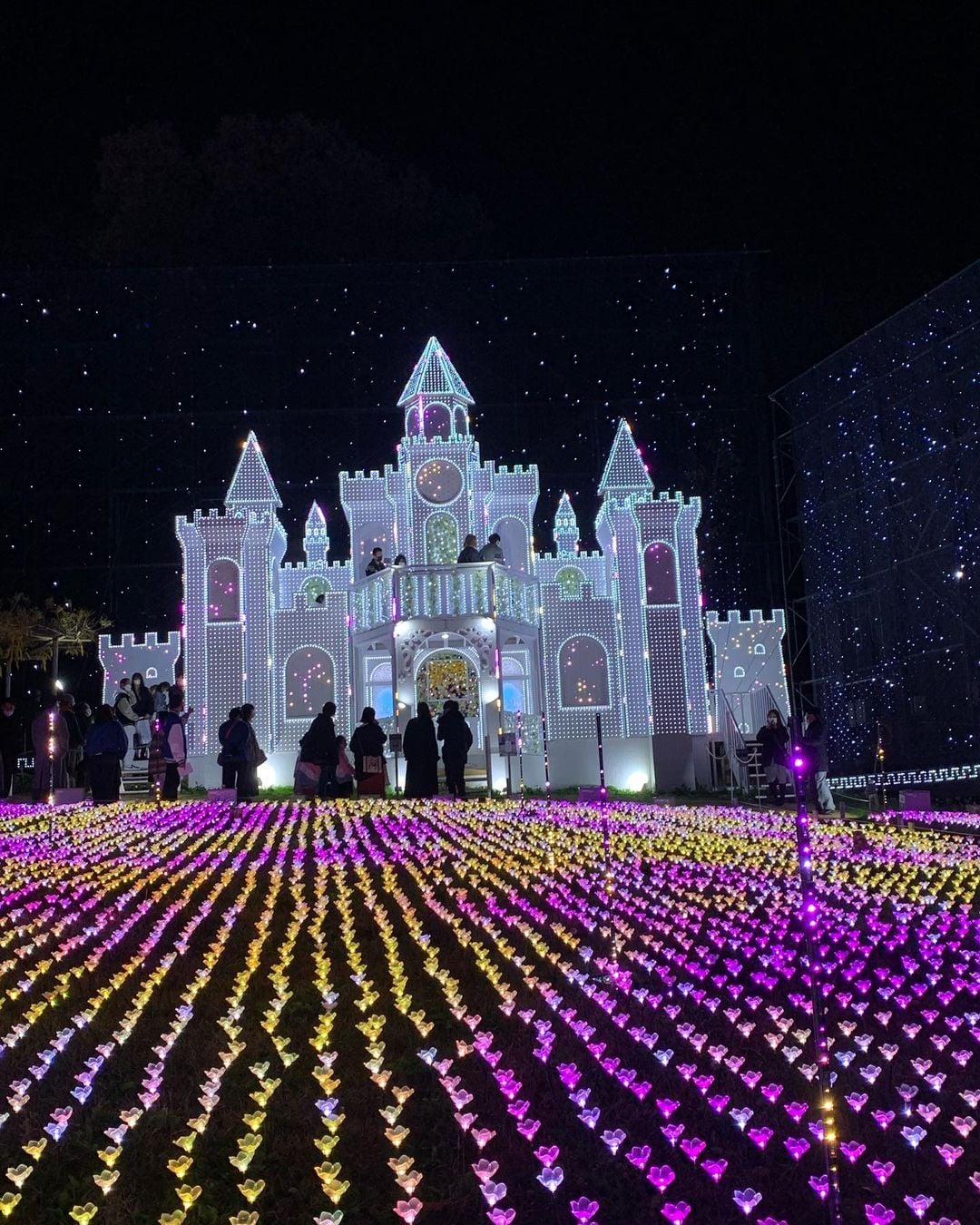
Light up for Christmas at Ashikaga Flower Park.
Image credit: @karashi.1119
Another highlight of Gunma is Ashikaga Flower Park and Lake Sagami. At night, these 2 places are lit up in neon with about 3 million light bulbs. The dazzling light show is worth a look and a few snaps too.
Travel time from Tokyo: 1.5 hours
Getting there: Take the JR East Hokuriku Shinkansen Line from Tokyo Station to Takasaki Station. You can get around most attractions in Gunma via the public bus system here. For ease and convenience, the above day trip takes you directly from Shinjuku in Tokyo to all spots mentioned above. It also includes time for souvenir shopping and a visit to a tofu skin factory.
Book the Day Trip to Gunma.
– From Osaka –
1. Pet bunnies on an abandoned island
You might be familiar with Hiroshima from your history books, but maybe not the cuddlier, softer side to the city that is Okunoshima. Also known as Rabbit Island, this offshore isle is where hundreds of wild bunnies have made this place their home.

There are countless theories and conspiracies as to why rabbits have taken over Okunoshima. One posits that the buns are leftover experiments from the war, while another claims a group of school children accidentally left a few there and they mated like, well, rabbits.
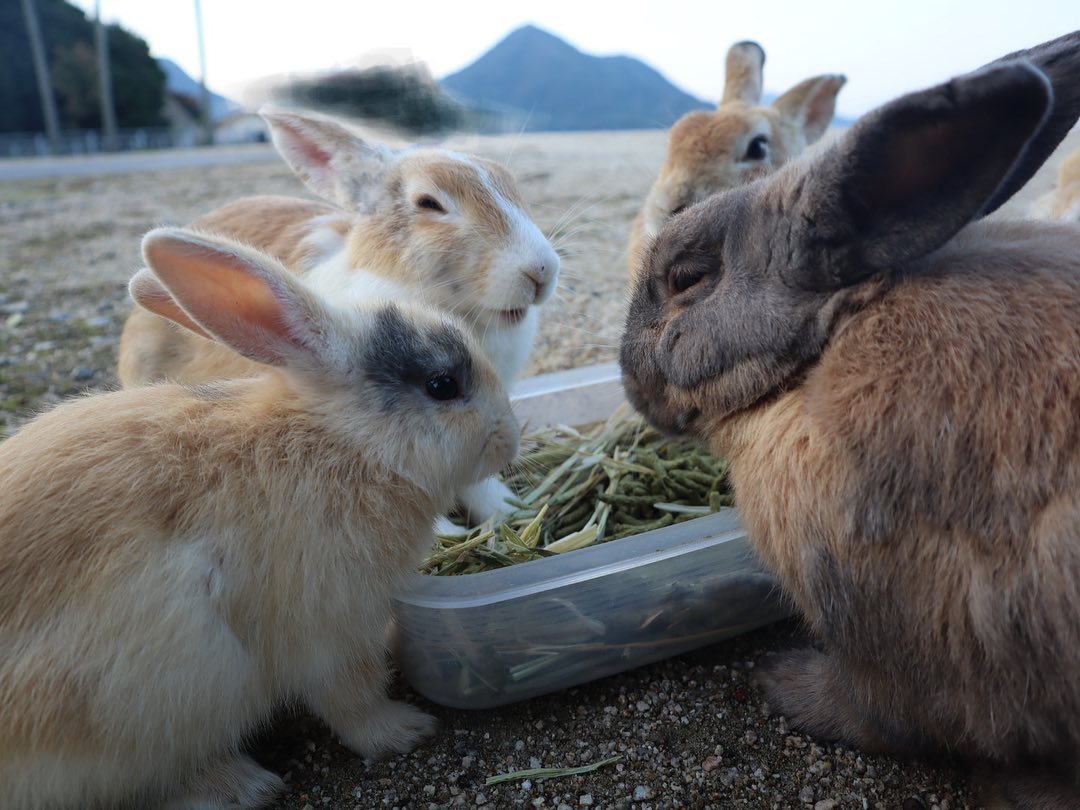
Image credit: @aya7couleurs
Regardless of their origin story, these rabbits are quite tame and welcoming of human visitors. They’re greedy creatures so the best way to get their attention is by feeding them treats (¥100, ~S$0.99). These are available at the port before you board the ferry to the island. You can bring your own fresh veggies like lettuce and carrots. Just be sure to clean up before you leave.
Travel time from Osaka: 3 hours
Getting there: With the JR Kansai-Hiroshima Area Pass, you can take the Tokaido Sanyo Shinkansen from Shin-Osaka Station to Mihara Station. Then take the Mihara-Tadanoumi-Takehara bus to Okunoshima Entrance stop to get to Tadanoumi Port. You’ll need to take the Miyajima Ferry from here to get to the island.
Book the JR Kansai-Hiroshima Area Pass.
Okunoshima
Round trip ferry price: ¥620/pax, ~S$6.14
Address: 1-2-1 Tadanoumi, Tadanomi Port Takehara, Hiroshima 729-2316, Japan
Tadanoumi Port opening hours: 7.40am-6.40pm
Contact: + 81 846 26 0853 | Okunoshima website
2. Visit a village turned into an art installation on Japan’s art island
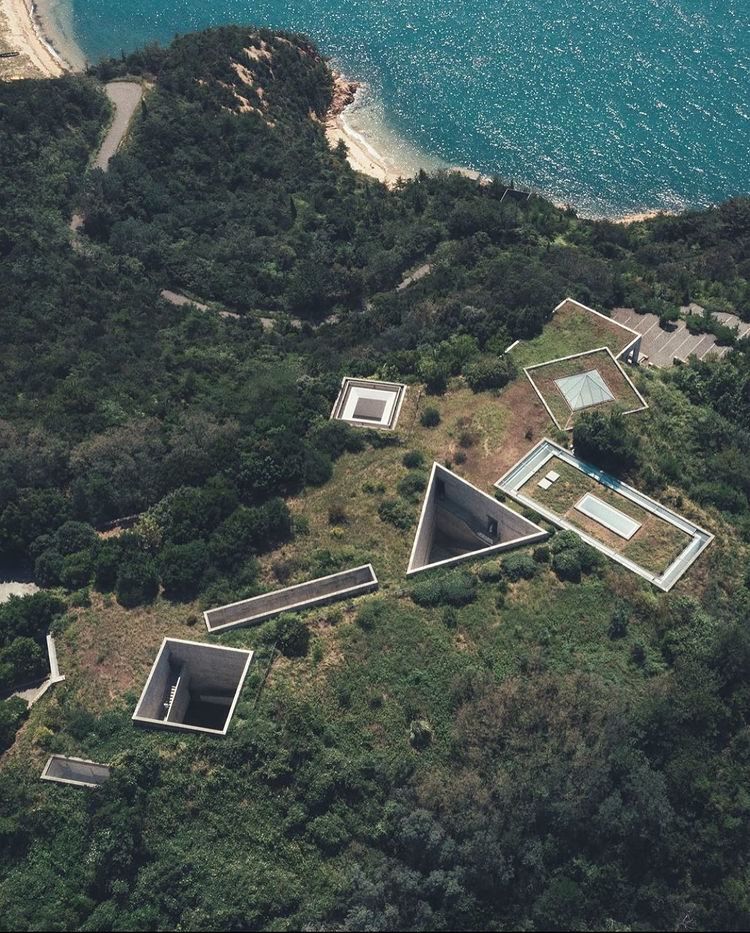
Image credit: @naoshimaisland
Artwork barricaded behind velvet ropes in a museum are simply put – boring. Not at Naoshima though, where the entire island is covered in art installations you’re free to touch and interact with as much as you want.
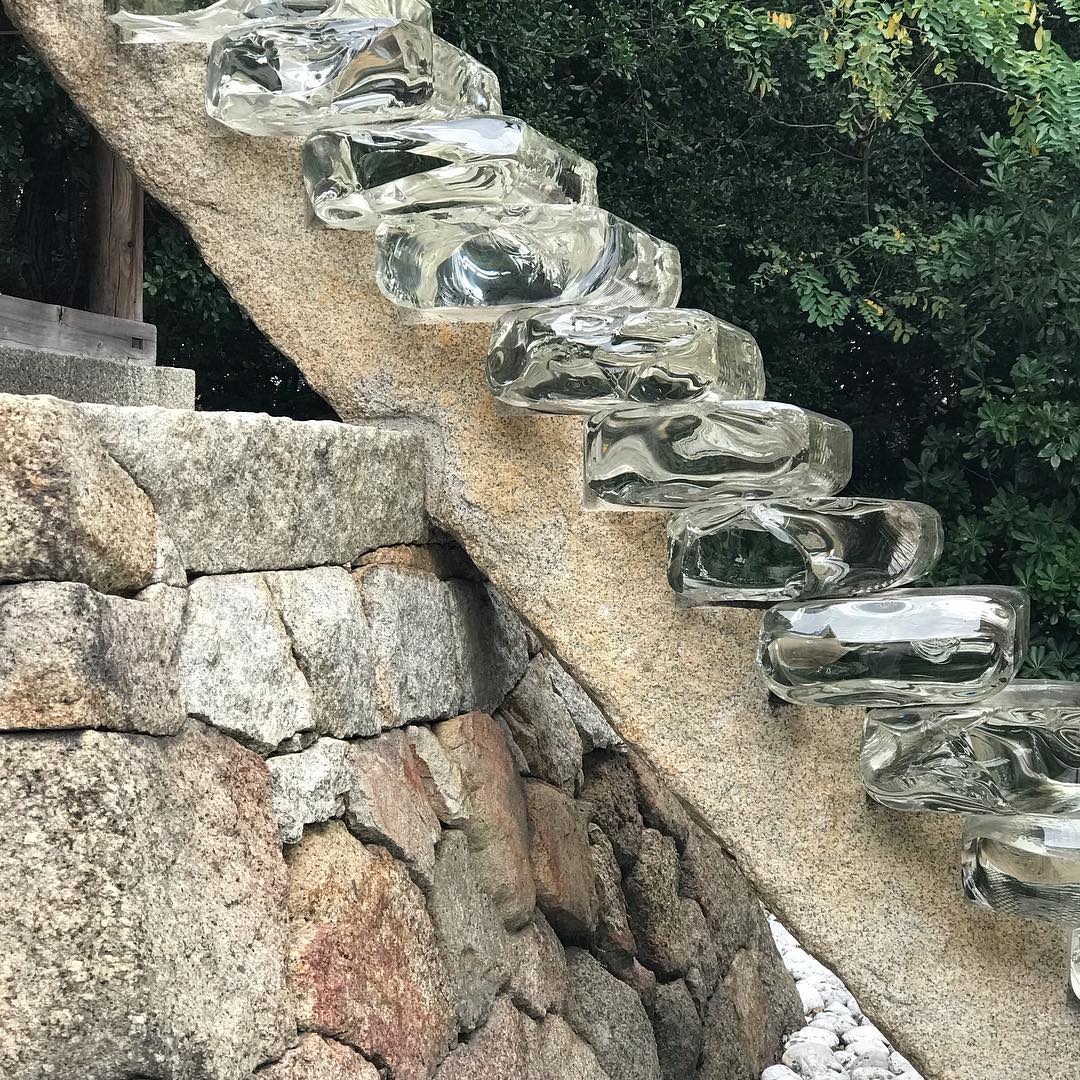
Glass staircase at the Go’o Shrine as part of the Art House Project.
Image credit: @sgrumbirei
You can download the Naoshima Art Map that’ll show you where each masterpiece is located. Top of the list is the Art House Project, where abandoned houses in a village are now homes to LED light installations and glass staircases.
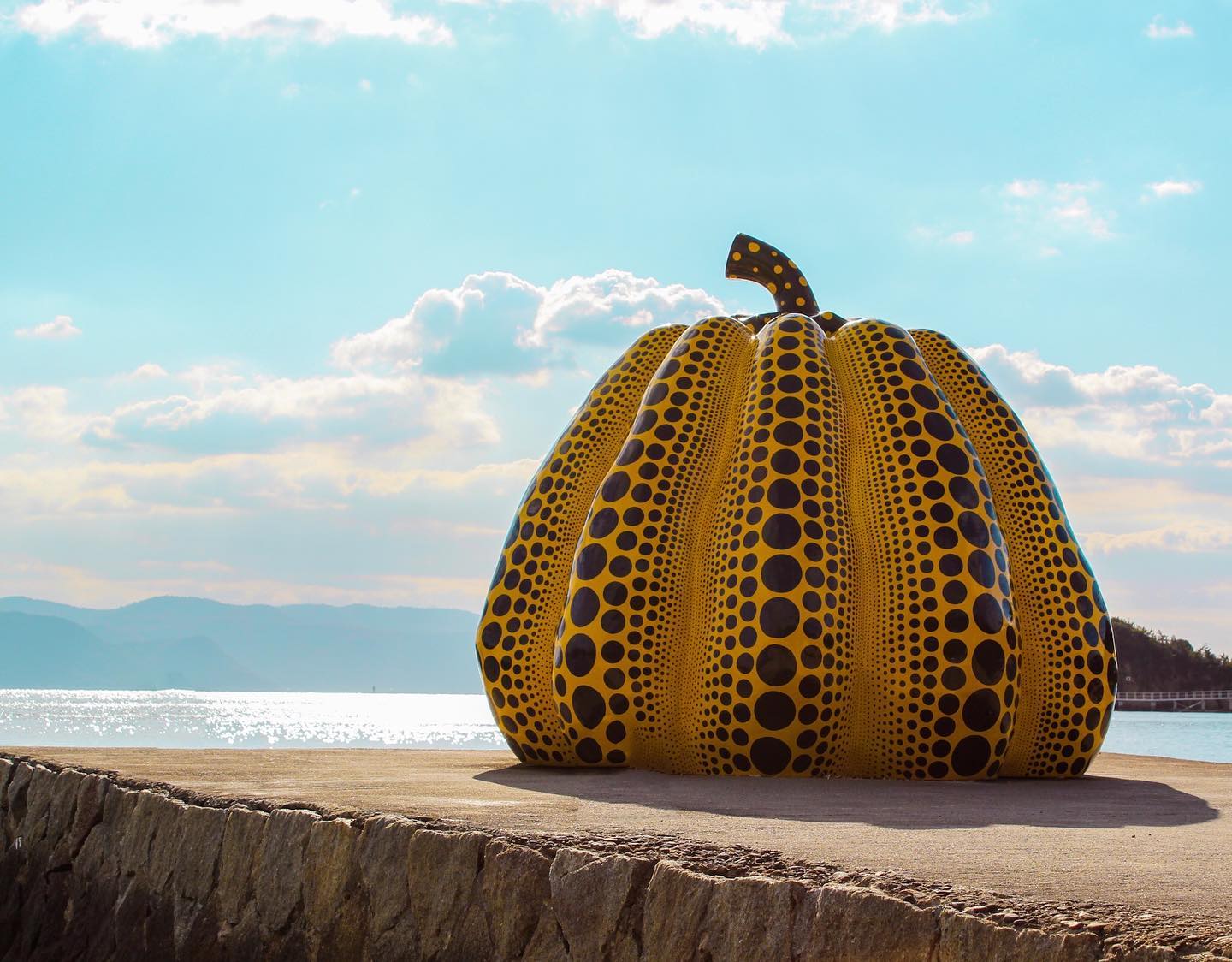
Image credit: @letiboiss
Possibly the most IG-worthy is artist Yayoi Kusama’s Yellow Pumpkin found on the southern pier. She also has an equally eye-catching Red Pumpkin at the northern part of the island. This one is larger and hollow, which allows visitors to crawl through the gourd.
Travel time from Osaka: 2.5 hours
Getting there: With the JR-West All Area Pass, you can ride the Tokaido Sanyo Shinkansen from Shin-Osaka Station to Okayama Station, followed by the JR Uno Line to Uno Port. Take the ferry to Miyanoura on Naoshima Island.
Book the JR-West All Area Pass.
3. Watch out for monsters in Kyoto
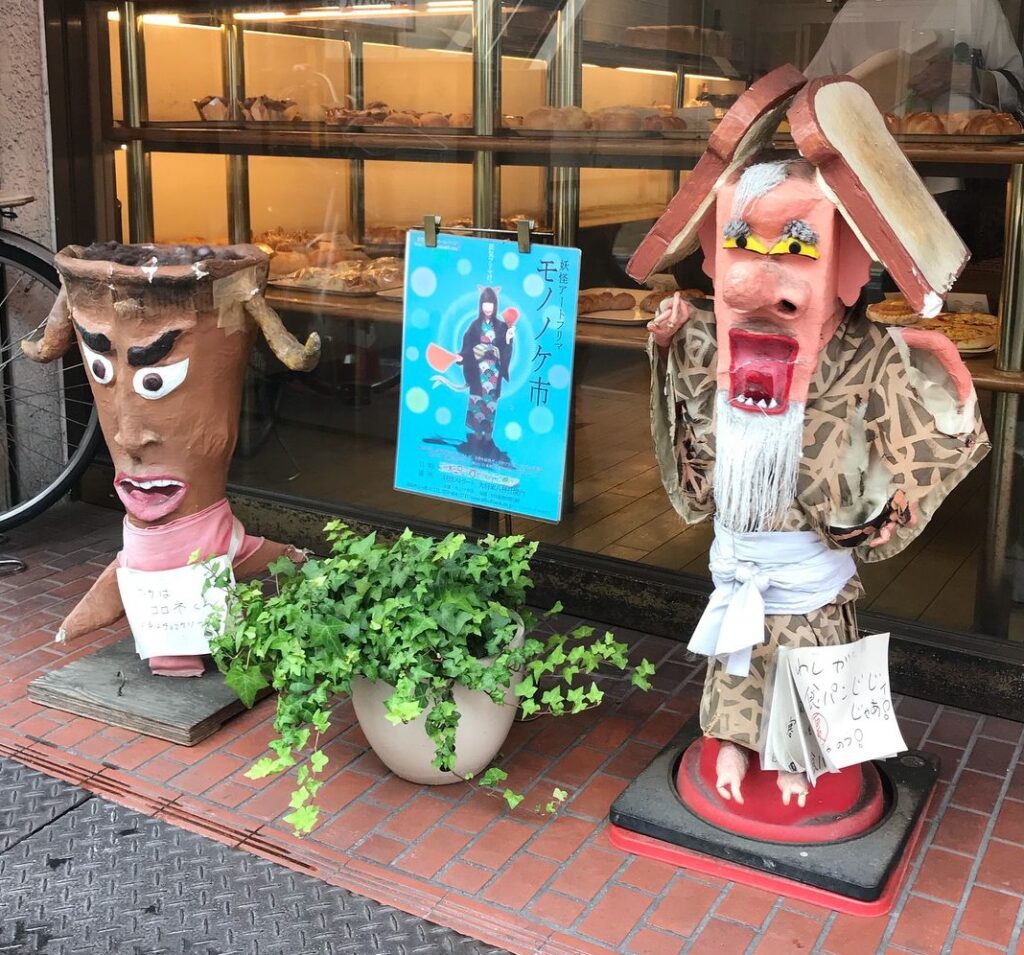
Image credit: @yokaitoons
If it’s not your first rodeo in Kyoto, you’ve probably already covered the major sites like the torii gates at Fushimi Inari and the Arashiyama Bamboo Grove. The next time you’re here, stick to the city to visit Ichijo Dori Yokai Street.
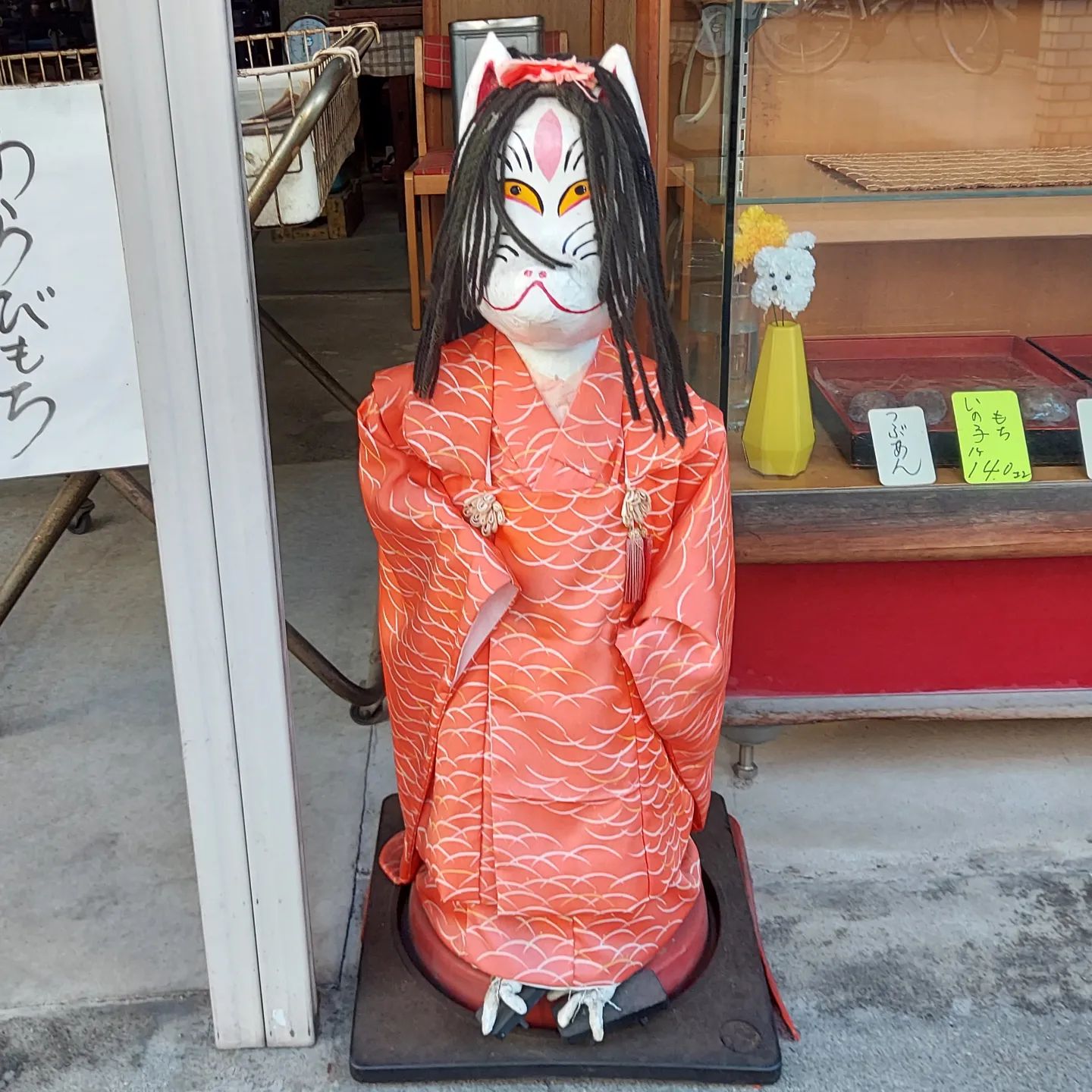
Image credit: @s.okuda.7
Just like the rest of Kyoto that’s shrouded in tales of mythical creatures that roam the streets, Ichiko Dori Yokai is no different. Here, yokai or Japanese spirits take the form of handmade monsters that you’ll be able to spot in front of shops along this stretch.
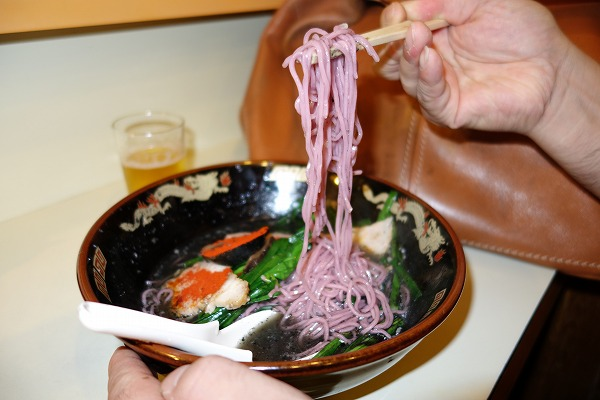
Yokai Ramen.
Image credit: Kyoto Taishogun Ichijo Yokai Street
There’s no set formula to how the monsters are created. You’ll see frog-like ones, one-eyed human figurines, and even cats wearing kimonos. Mark your visit to “Monster Avenue” with the aptly named yokai ramen (¥750, ~S$7.41) at Inoue Restaurant. The pink ramen noodles in a pitch-black broth is just as terrifying as the monsters outside.
Travel time from Osaka: 1 hour
Getting there: The Hankyu Kyoto Line brings you directly from Osaka-Umeda Station to Saiin Station in Kyoto. From here, board the Kyoto City Bus Route 26 to Kitano Hakubaicho. Ichjio Dori Yokai Street is a short 3-minute walk away.
Book the Hankyu Tourist Pass.
Inoue Restaurant
Address: 7-3 Okamino, Inoue Restaurant, Kamigyo, Kyoto 602-8375, Japan
Opening hours: Wed-Mon 11am-2.30pm, 5.30pm-9pm (Closed on Tuesdays)
Contact: +81 75 461 7019 | Inoue Restaurant website
4. Visit the most sacred site in Japan
If you’re struggling to find inner peace, perhaps a visit to the most sacred site in Japan will set your heart and mind straight. This is Mt Koya AKA the HQ of Shingon Buddhism, one of the oldest religious practices in the country.
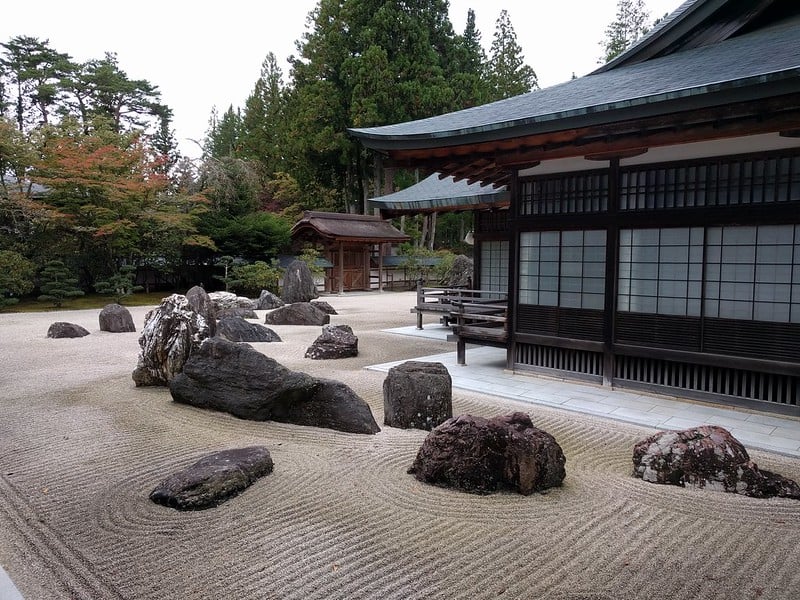
Banryu Tei Rock Garden.
Image credit: @x768
Shrines and monasteries number in the hundreds here, but the key one to visit is the Kongobuji Temple that is considered the main temple of the sect. You’ll want to check out the Banryu Tei Rock Garden in the backyard, which is the largest rock garden in Japan. Another massive feature is the temple’s kitchen that is big enough to feed a crowd of 2,000 easily.
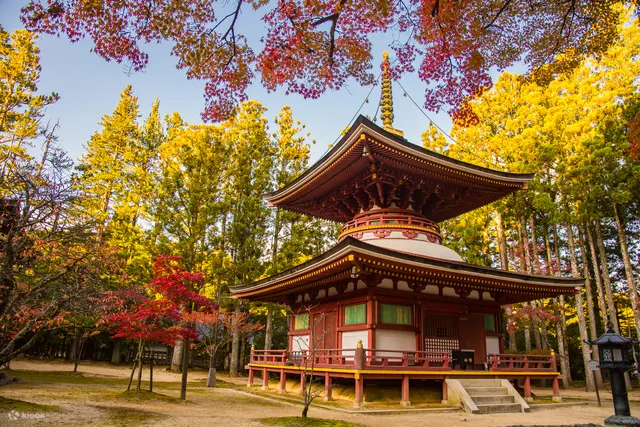
Image credit: Klook
If you’d rather be one with nature, many locals recommend trekking the surrounding forests of Mount Koya for forest therapy. It’s the act of staying still and allowing yourself to fully experience the sights, sounds, and smells of the forest. Apparently, it helps people destress and relax.
Travel time from Osaka: 2.5 hours
Getting there: Take the Osaka Loop Line from Osaka Station to Shin-Imamiya Station then change to the Nankai-Limited Express to Gokurakubashi Station. From here, ride the Nankai Koyasan Cable Car up to Koyasan Station.
You can also book a Mt Koya Day Tour (S$ 238.69) that starts from Kyoto Station, which is a mere 20 minutes away from Osaka via the Tokaido-Sanyo Shinkansen. The day tour includes transport and admission to Kongobuji Temple, Okuno-in Mausoleum, as well as lunch at a local restaurant.
Book the Mt Koya Day Tour.
Kongobuji Temple
Address: 1-3-2 Koyasan, Kongobuji Temple, Koya, Ito, Wakayama 648-0294, Japan
Opening hours: 8.30am-5pm, Daily
Contact: +81 736 56 2011 | Kongobuji Temple website
5. Come face-to-face with with Godzilla
There’s no shortage of lovable characters in Japan. Hello Kitty and friends, and Totoro and his gang all have shops and theme parks dedicated to them. But one oft-neglected character now has his own museum.
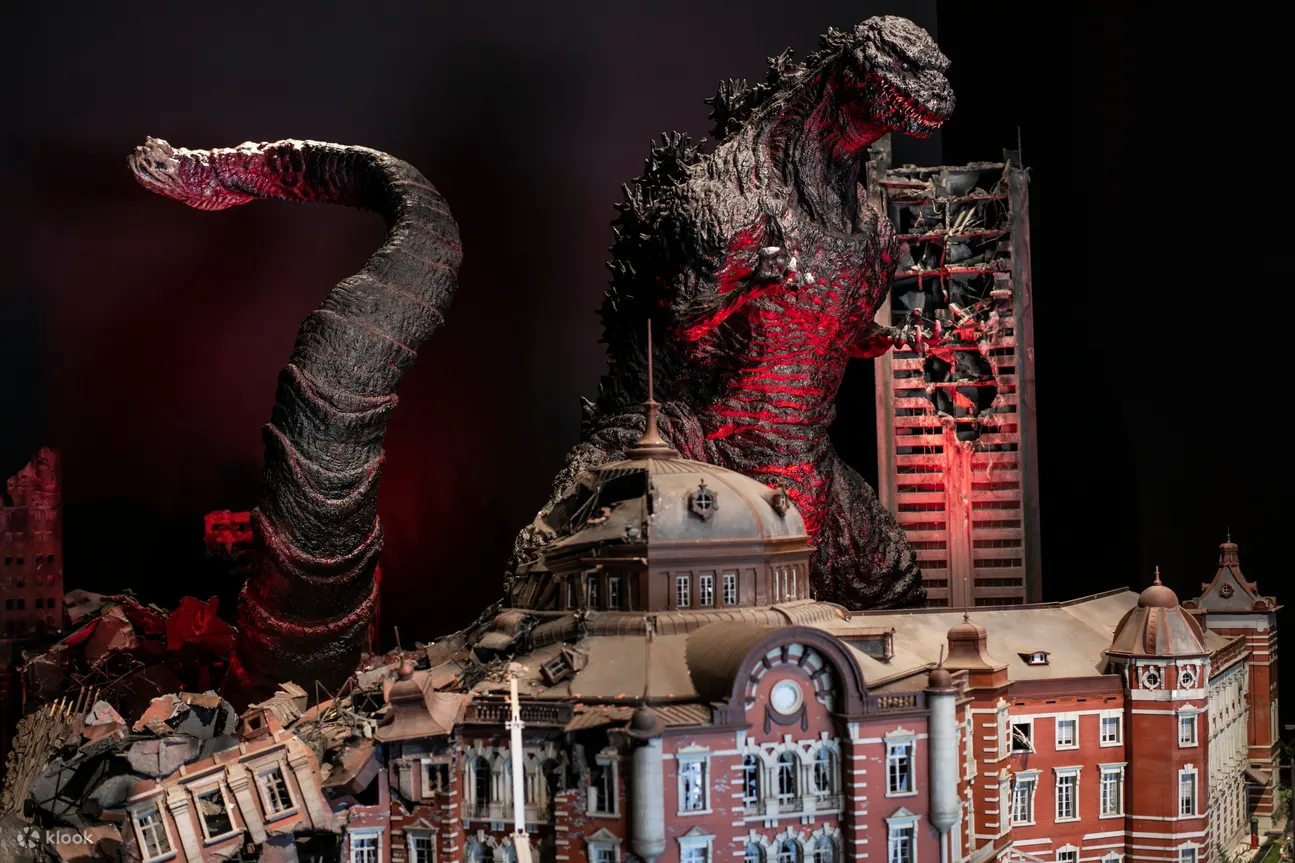
Image credit: Klook
Enter Godzilla Museum on Awaji Island. If you count yourself a fan of the 120m-tall lizard that terrorises Japan, this is where you can come face-to-face with him. A life size replica of Godzilla greets visitors to Awaji Island. There are dioramas of the beast in action, and a museum to learn his backstory to visit too.
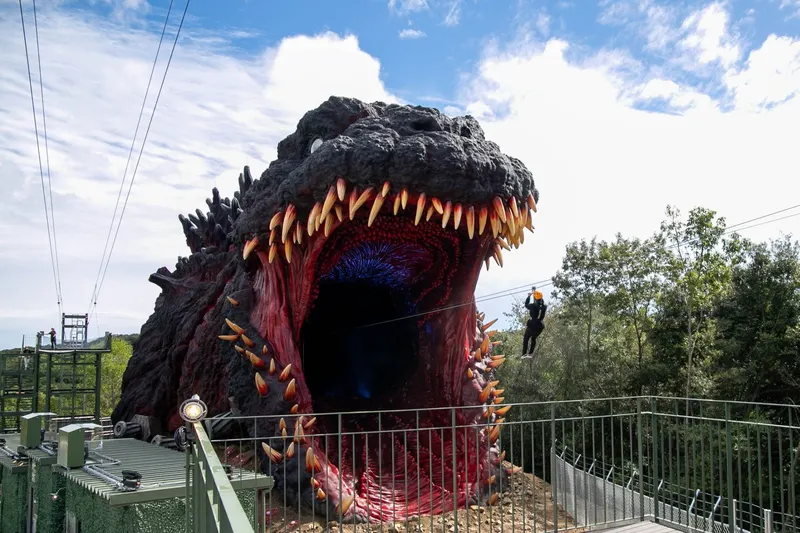
Image credit: Klook
One of the bigger thrills here is the zipline adventure that’s both a ride and game in one. You’ll first zip through Godzilla’s mouth, then be deployed to rescue hapless citizens from the monster’s wrath in a shooting game.
Travel time from Osaka: 1.5 hours
Getting there: With the Hanshin 1-Day Tourist Pass, you can take a direct train from Osaka-Umeda Station to Maikokoen Station. Thereafter, it’s a short 8-minute walk to
Kosoku Maiko, where you can take the Shinki Bus headed towards Nojima to reach Kenritsu Awajishima Koen, the entrance to the museum.
Book the Hanshin 1-Day Tourist Pass.
Godzilla Museum
Price:
Admission and zipline for adult (12 years old and up): ¥3,040, ~S$30.04
Admission and zipline for child (5-11 years old): ¥1,360, ~S$13.44
Address: 2425-2 Kusumoto, Awajishima Park, Awaji City, Hyogo 656-2301, Japan
Opening hours: 10am-10pm, Daily
Contact: Godzilla Museum website
Book tickets to Godzilla Museum.
Visit these less touristy places in Japan
It doesn’t matter how many times you’ve done the same itineraries in Osaka and Tokyo. Now you can add on nearby cities that can be covered in a short day trip to switch things up a bit.
We’ve already done the legwork in compiling the research for you, all you have to do now is pack, and get your attraction tickets ready of course. Thankfully, this can be done in just a few clicks when you book on Klook, where you’ll get instant confirmations sent directly to your email.
And even if you’re not into planning schedules down to the minute to visit these locales, Klook has day trips you can book as well. These round trip options provide direct transport, as well as meals and guides as well. Now there’s no reason to confine yourself to the same few tourist spots the next time you’re in Tokyo or Osaka.
Book all you need for your Japan trip via Klook here
This post was brought to you by Klook.
Photography by Tasha Sun.
